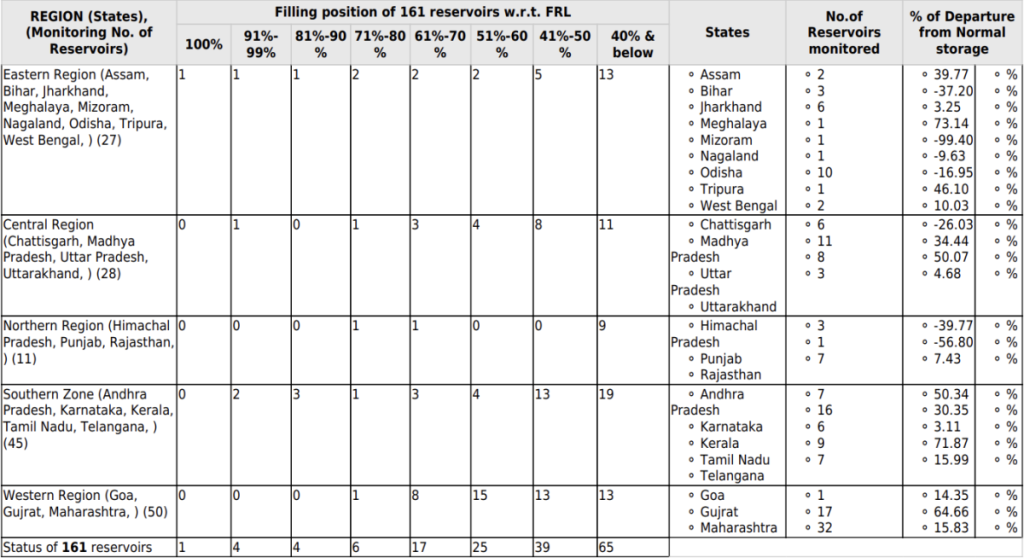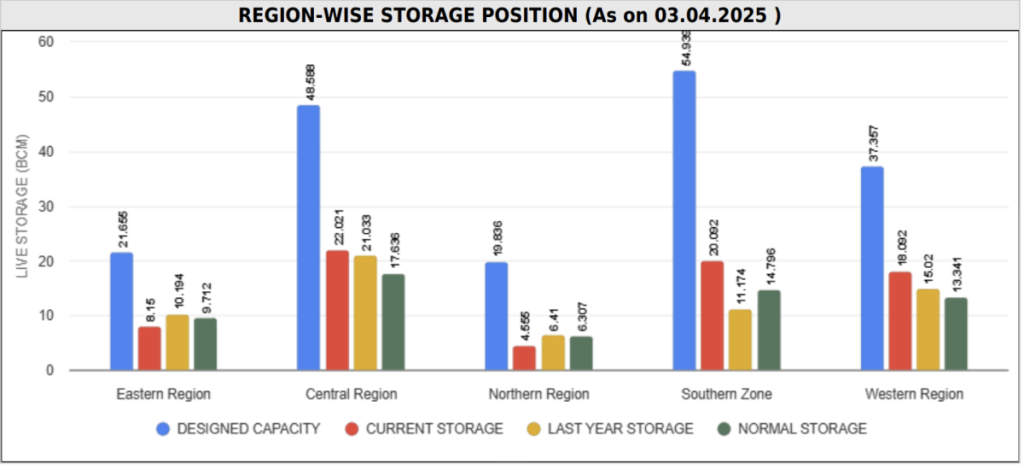
New Delhi: Water storage in 161 major reservoirs in India is below 40% of their cumulative capacity this week, a bulletin from the Central Water Commission has shown.
Reservoirs are crucial for irrigation as they store water during wet periods, enabling its regulated release for agricultural use during dry seasons.
The Hindu Businessline has reported on this data point, adding that the levels in 65 of them is below 50%.
The CWC’s weekly bulletin on the 161 reservoirs showed that the storage had dropped to 72.91 billion cubic metres (BCM) this week of the 182.375 BCM capacity. It was still higher than last year and normal (last 10 years) levels.
This week, the CWC has launched a web-based Reservoir Storage Monitoring System (RSMS) portal which is supposed to monitors the live storage capacity of these 161 reservoirs.
Out of the 161 reservoirs, 20 reservoirs are of hydro-electric projects with a total live storage capacity of 35.299 BCM. The total live storage capacity of 161 reservoirs is 182.375 BCM which is about 70.74% of the live storage capacity of 257.812 BCM which is estimated to have been created in the country.
The overall storage position is better than the corresponding period of last year in the country as a whole and also better than the normal storage during the corresponding period, the bulletin says.

Source: CWC bulletin, April 3, 2025.
As per the April 3 bulletin, live storage available in 161 reservoirs is 72.91 BCM, which is 39.98% of total live storage capacity of these
reservoirs. However, last year the live storage available in these reservoirs for the corresponding period was 63.83 BCM. Thus, the live storage available in 161 reservoirs, the government claims, is 114.23% of the live storage of corresponding period of last year.
In the northern and eastern regions, dam storage in the current year is recorded as less than the corresponding period of last year. It is better in the wester, central and southern regions.

Source: CWC bulletin, April 3, 2025.
The bulletin says that ‘better than normal’ storage is available in the reservoirs on the Ganga, Tapi, Narmda, Krishna, Sabarmati, Pennar, east-flowing rivers between Mahanadi and Pennar, Brahmaputra, Godavari, Cauvery, west-flowing rivers from Tadri to Kanyakumari, west-flowing rivers of Kutch and Saurashtra including Luni, and west-flowing rivers from Tapi to Tadri.
Close to normal storage is available in reservoirs on the Mahi, Mahanandi, and Subarnarekha.
Storage is deficient in Indus, Brahmani, and Baitarni, and highly deficient in Barak.




